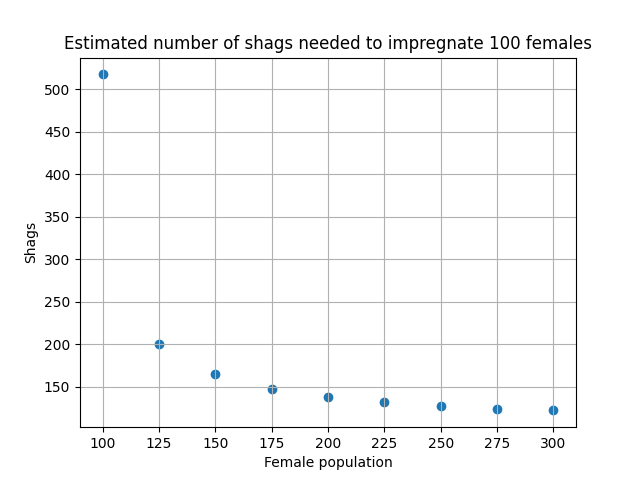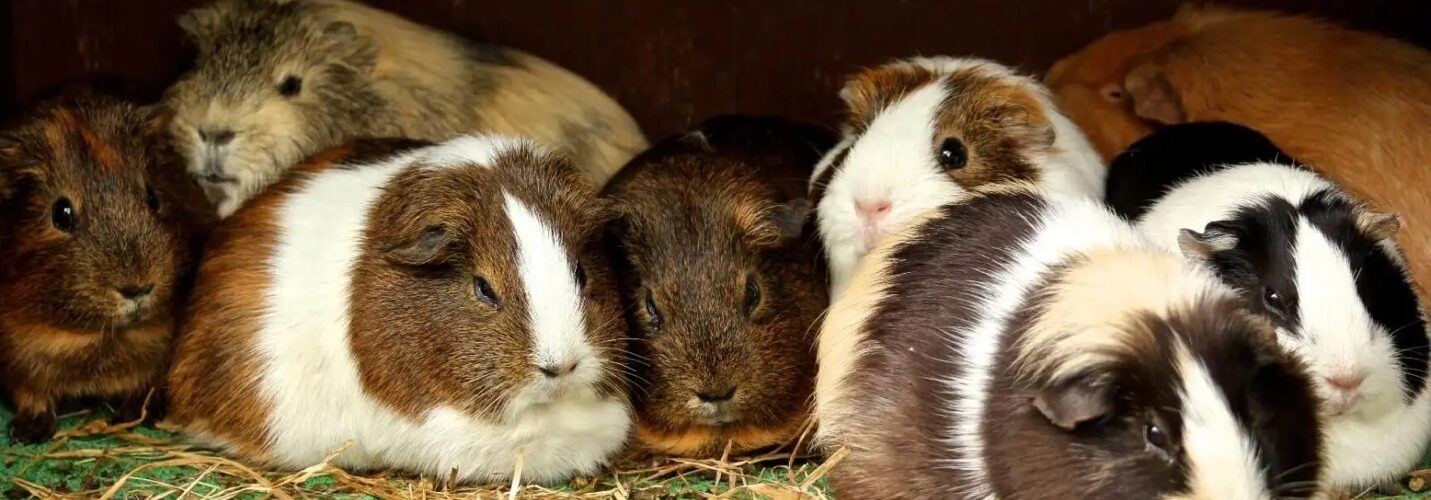There’s a guinea pig going viral on social media. This creature escaped his enclosure at a farm in the UK, and somehow managed to impregnate around 100 female guinea pigs. The owners of the farm found out because the poor fella looked a little tired. After their discovery, they appropriately named him Randy. The original story took place ten years ago, but every so often, someone rediscovers it on social media – as happened last week.
This story makes people wonder: how many times did Randy actually have to mate, to pull that off? Here we are assuming he chose females at random. My first thought was: the answer will depend on the size of the female population. The rationale here is that it is easier to get to 100 pregnancies when the population is large, because with every mating he will likely have a ‘fresh’ guinea pig that he has not encountered before. I investigated the literature to find out, but it was inconclusive. All it said was that the farm had about 300 guinea pigs total, so it is safe to assume that anywhere between 100 and 300 of them were female.
And here’s the biological twist: female guinea pigs are only fertile for a tiny window each cycle — just 11 hours every 16 days. Add in the fact that sperm can survive for about 24 hours, means that Randy had roughly a 9.1% chance of getting a female pregnant with each random mating.
Random ( ) Randy
So, I did the math. Or rather, I did the coding. While I’m sure we can work out some formula for this, the programmer in me was quicker and decided to write some simulation code. In it, I imagine a female population of size n. Every time Randy picks a random number between 1 and n, which represents one specific female. With a probability of 9.1% he gets her pregnant. I keep track of every lady who is pregnant, which is basically an array of n yesses and no’s. If Randy impregnates an already pregnant lady, her ‘yes’ stays a ‘yes’ and does not increase the total pregnancy count. After every mating I check if the total number of pregnant ladies has already reached 100. If so, there we have our first estimate: the number of matings until now.
If I run the simulation again, I get different outcomes – explained by sheer chance. I run it a few times and take the average of all outcomes, I get a good estimate for the expected number of matings needed. How often I ran it, depended on the population size: the smaller the population the more replications were needed to get a robust estimate. When one is ready to stop simulating is an important question in our field, and some researchers make it their specialty to investigate this. Here are the estimates that I found:
- If there were 300 females, it would take Randy about 1330 matings.
- If there were only 100 females, he’d need around 5700 matings.
Impeccable instincts
Those numbers are incredibly high. So high, in fact, that they are a little hard to believe. Perhaps it is more realistic to assume that Randy has impeccable instincts and knows exactly when a female is fertile, saving his precious shags for those moments. So I change the 9.1% in my code to 100%, and in that case the numbers are as shown below:

That’s still a lot of effort for a small rodent. No wonder Randy looked a little tired. In the end, his story came with a heartwarming twist: all 400 (!) of Randy’s babies were eventually adopted into loving homes. That makes one more happy ending to add to the count – just not the kind he had in mind.
Image: Some random Guinea pigs. Not necessarily Randy, although statistically likely some of his kids or concubines are depicted. Source: Animalia.bio.














Add comment